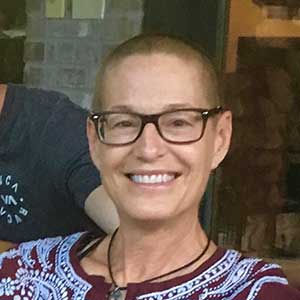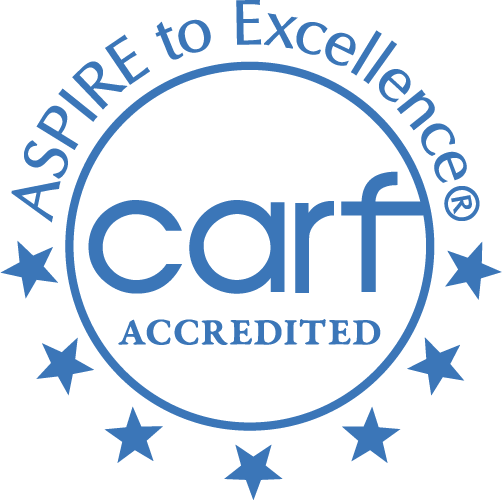Skip To Rehab Listing
Even so, for those struggling with alcohol and drug addiction problems, Belgrade can also offer workable solutions in the form of 25 drug and alcohol rehab facilities designed to help patients in their recoveries.
Drug and Alcohol Rehab Methods and Settings
Belgrade area residents who have a problem with addiction have many treatment settings available to them, such as the following: short term treatment facilities, long term drug rehab facilities, detox facilities, intensive outpatient treatment, inpatient addiction treatment facilities.
These rehabilitation programs make drug and alcohol rehabilitation easy to obtain, with convenient locations and a number of varying treatment approaches from which to choose, such as those listed here: group therapy, motivational interviewing, group therapy, anger management, individual psychotherapy, 12-step facilitation approach.
Special Programs for Drug and Alcohol Recovery
Alcohol and drug abuse impacts every individual differently. In order to address these differences and offer more customized treatment, alcohol and drug rehab programs in Belgrade provide a number of special programs for clients such as: persons with eating disorders, co-occurring mental and substance abuse disorders, persons with serious mental illness, persons who have experienced sexual abuse, housing services, substance abuse education.
Clients who believe they may need these customized services can discuss them with the treatment center in order to get help that is designed to maximize the chances of sustained sobriety.
Rehab Payment Alternatives
Residents of Belgrade come from varied economic situations, making it vital for treatment centers to provide multiple payment options that place treatment within financial reach. Patients can expect to get funding options at close by addiction treatment facilities including the following: private health insurance, cash or self-payment, military insurance, sliding fee scale, access to recovery (atr) voucher, state education funds.
Despite a patient's financial situation, payment should not be a barrier to recovery. Alcohol and drug rehabilitation programs guide people through their payment alternatives and help them pinpoint a way to pay for their treatment.
The goal of varied treatment programs, approaches, programs, and financing options is that treatment for drug and alcohol addiction is accessible for as many individuals who need it.
Commonly Asked Questions about Addiction and Treatment
How can society prevent teen substance abuse?
Preventing teen substance abuse requires a comprehensive, multifaceted approach that involves various sectors of society, including families, schools, communities, and the healthcare system. Here are some strategies that can be employed:
Education and Awareness: Schools and communities can provide education about the dangers of substance abuse, the nature of addiction, and the benefits of healthy lifestyle choices. This education should be accurate, age-appropriate, and engaging.
Family Engagement: Parents and caregivers play a critical role in prevention. They can talk openly with their children about substance abuse, set clear expectations around substance use, monitor their children's activities and friendships, and provide a supportive and nurturing environment.
Early Intervention: Early identification of risk factors for substance abuse (such as mental health issues, academic struggles, or behavioral problems) can allow for timely intervention. Healthcare providers, educators, and parents can all play a role in identifying and addressing these risk factors.
Access to Mental Health Services: Teens with mental health conditions are at a higher risk of substance abuse. Ensuring access to mental health services can help address these underlying issues and reduce the risk of substance abuse.
Healthy Activities: Providing teens with opportunities for healthy, engaging activities (like sports, arts, volunteering, etc.) can reduce boredom and stress, provide a sense of purpose and belonging, and offer positive alternatives to substance use.
Community Support: Communities can create environments that support healthy choices and discourage substance use. This can include things like enforcing age restrictions on the sale of alcohol and tobacco, providing safe and substance-free recreational opportunities for teens, and fostering a community culture that values health and wellbeing.
Substance Abuse Programs: Schools and communities can implement evidence-based substance abuse prevention programs. These programs can teach skills for resisting peer pressure, making healthy decisions, and coping with stress.
Policy Measures: Policies can be implemented that help prevent substance abuse, such as those that limit the advertising of alcohol and tobacco products, regulate the prescription of addictive medications, and support substance abuse prevention and treatment services.
Peer Support and Leadership: Peer-led initiatives can be very effective in preventing teen substance abuse. Teens may be more likely to listen to and be influenced by their peers. Peer leaders can model healthy behaviors, challenge norms around substance use, and provide support to their peers.
What will a rehab do to help me get through my withdrawal symptoms?
Rehabilitation centers use a combination of medical, psychological, and supportive care to help you manage and overcome withdrawal symptoms during the detoxification stage of recovery. Here's what you can expect:
Medical Supervision and Care: During withdrawal, you'll be under the constant care of medical professionals who monitor your vital signs and general health. This is crucial because withdrawal from certain substances can be life-threatening.
Medication-Assisted Treatment: Depending on the substance you're withdrawing from and the severity of your symptoms, the medical team may administer medications to alleviate discomfort and reduce cravings. For example, methadone or buprenorphine might be used for opioid withdrawal, while benzodiazepines might be used for alcohol withdrawal.
Psychological Support: Mental health professionals provide psychological support during withdrawal. This might include individual counseling, group therapy, or cognitive-behavioral techniques to help manage cravings and cope with the emotional stress of withdrawal.
Comfort Measures: Rehab centers often use comfort measures to help manage withdrawal symptoms. These might include a quiet and comfortable room to rest in, nutritional support, hydration, and complementary therapies such as acupuncture, massage, or yoga.
Preparation for Ongoing Treatment: Detox and withdrawal management are just the first steps in the recovery process. While helping you through withdrawal, staff at the rehab center will also be preparing you for the next phases of treatment, which may include therapy, medication management, and skill-building to maintain long-term sobriety.
Peer Support: Many rehab centers facilitate peer support groups, where you can share experiences and coping strategies with others who are going through a similar process.
What medications are used for the treatment of addiction?
Several medications have been approved by the U.S. Food and Drug Administration (FDA) for the treatment of addiction to alcohol and certain types of drugs. The specific medication used can depend on the substance the person is addicted to, their overall health, and other individual factors. Here are a few examples:
For Alcohol Addiction:
- Disulfiram (Antabuse): This medication causes unpleasant effects such as nausea and flushing of the skin if a person drinks alcohol. The aim is to discourage them from drinking.
- Naltrexone (Revia, Vivitrol): Naltrexone blocks the euphoric and sedative effects of alcohol, helping to reduce cravings.
- Acamprosate (Campral): Acamprosate works by restoring the balance of certain chemicals in the brain that may become disrupted due to alcohol addiction. It can help people maintain abstinence from alcohol after they quit drinking.
For Opioid Addiction:
- Methadone: This is a long-acting opioid agonist that can prevent withdrawal symptoms and reduce cravings for opioids. It is dispensed through specialized opioid treatment programs.
- Buprenorphine (Subutex, Suboxone): Buprenorphine is a partial opioid agonist that can help manage cravings and withdrawal symptoms. Suboxone also contains naloxone to prevent misuse.
- Naltrexone (Revia, Vivitrol): Like its use in alcohol addiction treatment, naltrexone can block the euphoric effects of opioids.
For Nicotine Addiction:
- Nicotine Replacement Therapies (NRTs): These come in various forms like gums, patches, lozenges, nasal sprays, and inhalers, and can help manage withdrawal symptoms and cravings when quitting smoking.
- Bupropion (Zyban): Initially developed as an antidepressant, bupropion can also help reduce cravings and the symptoms of nicotine withdrawal.
- Varenicline (Chantix): Varenicline helps reduce cravings for nicotine and decrease the pleasurable effects of cigarettes and other tobacco products.













